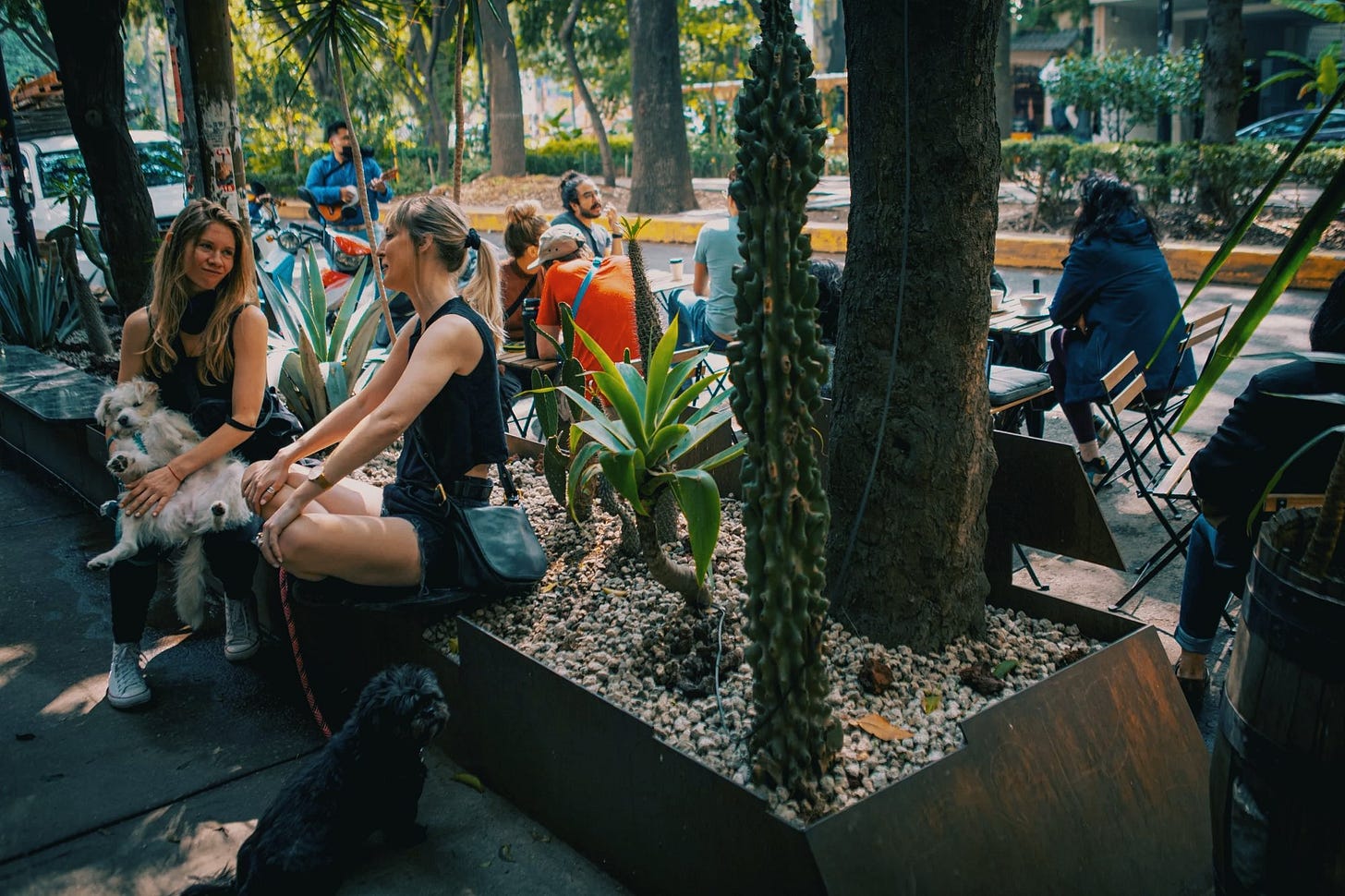How Mexico City Has Changed in 2025
From Someone Who’s Been Here For Years
Every week, another café opens its doors. Sometimes it’s a nice rooftop cocktail bar with overpriced mezcal. Sometimes it’s a tiny espresso shop wedged between two old ass buildings, clearly designed to look like it belongs in Brooklyn. Sometimes it’s a restaurant tucked into a building that was condemned last year.
That’s Mexico City now. In my opinion, the city doesn’t really change…rather it mutates a little. It doesn’t bulldoze the old to build the new..As much as it should. Instead, it occupies unused corners that previously looked bombed out. Mexico City flips abandoned storefronts, and converts empty lots into venues. Blocks you walked past for years suddenly have a line out the door. The ones that used to be busy are now dead. I don’t think it’s like anywhere else, but Mexico City still keeps its charm and culture.
When I first landed here, I actually had zero expectations. I moved here during and figured I’d stay for a couple weeks to visit friends. But this city is definitely alive in a way most U.S. cities aren’t. The vibe hasn’t changed in my opinion….But the costs have. The prices have. And depending on who you ask, the social dynamics have too.
This is still the same city I moved to years ago..chaotic, frustrating, but still addictive. But if you’ve lived here long enough, you start noticing the details. You notice how certain neighborhoods lose their grit. You notice how locals and foreigners eye each other differently. You notice the protests, the rent hikes, the small games landlords play, and the way dating shifts once you’re no longer “exotic.”
Here’s what I’ve actually seen over the past four or five years… the good, the bad, and the things some people don’t want to admit
Daily cost changes
Safety
Dating Shift
What nationalism and politics mean on the street level.
Why despite everything, I still see myself here long term.
If you’re new, this will show you what to expect. If you’ve been here a while, this will probably sound familiar.
The Real Cost of Living Shift
When I moved to Mexico City, I was paying around $1,400 USD for a three-bedroom in a prime neighborhood. Today, I’m closer to $2,000 USD.
But that didn’t happen overnight. It wasn’t some sudden gentrification apocalypse like Twitter makes it sound. It was incremental $1,400 in year one when the peso is 22:1, $1,600 in year two when the peso 19, and climbing steadily each year where the peso dropped closer to 16:1 and back up to almost 19. That’s what inflation looks like in real life.
Most people don’t actually understand inflation. They just see numbers rising and immediately point a finger. But rents go up everywhere. What makes Mexico City feel different (But the same) is that wages don’t keep up with those increases for most locals, not even close. The average Mexican still makes less than $600 USD a month. When landlords know foreigners are willing to pay $2,000, locals who earn in pesos get squeezed. But… The areas where these foreigner are have always been upper class areas. So in the neighboorshoods of average income. those hundred a month increases might be double-digit portions of people’s income…



